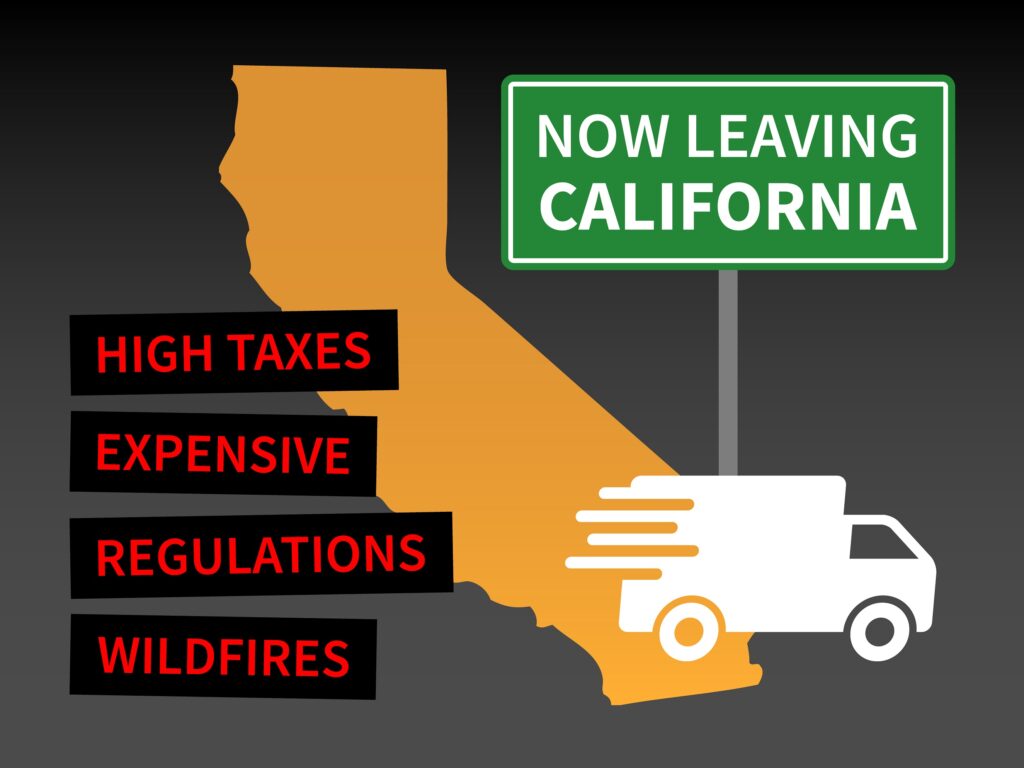James Wallner is a senior fellow at the R Street Institute and the author of three books on the U.S. Senate. To Wallner, the deeper sources of the challenges facing the Court aren’t in the judiciary itself but rather in America’s legislative branch. Over recent decades, Wallner notes, analysts have come to see America’s executive branch as becoming more and more powerful—and accordingly, more and more politicized. Those analysts have tended to see the primary cause behind expanding executive authority as lying with a Congress that’s increasingly allowed the executive to take on traditionally congressional responsibilities—such as crafting budgetary priorities and approving military conflicts—to the president. Now, Wallner says, Congress is increasingly enabling the same dynamic with the Supreme Court—effectively politicizing it in the process, transforming public perceptions of the Court into a body that makes laws rather than one that interprets them.
Eric Pfeiffer: How unprecedented is the steep decline we’re seeing with American public trust in the U.S. Supreme Court?
James Wallner: It’s certainly quite severe. But back in the mid-1970s, public trust in the Court was around 45 percent. It peaked at about 56 percent in the mid-1980s and has hovered around 50 percent for the past 25 years. So while trust has declined recently, that decline isn’t without precedent.
As to why it’s happening today, there will be a lot of controversy around that question, but to me, there’s a clear answer: The U.S. Supreme Court has been effectively tasked by the American people, and by the other branches, with doing something that’s just not its job. If you ask Americans on the street what the most powerful branch of the U.S. government is, often you’ll hear them say the executive branch—the president. But increasingly you’ll hear them say the Supreme Court. And it’s striking, because as Alexander Hamilton, one of the United States’ more renowned founders, said, the Court is actually the weakest branch: They don’t have the purse; they don’t have any executive or legislative decision-making power.
Today, though, both the Democrats and the Republicans have come to see the Court as just another policy-making factory that they want to control and ultimately enact policy through, essentially to mold America’s future according to their vision. But when you look to a high court to resolve the major controversial issues in your society, that will transform it into a political branch. It places the judiciary in the political fray as opposed to in a position where it can credibly adjudicate disputes between parties. And when that happens, you’re going to have a lot of people not liking its decisions—and starting to distrust it as an institution.
Pfeiffer: Why would the U.S. Congress and the White House want to cede decision-making authority to the Court? Isn’t politics all about consolidating power?
Wallner: Because it’s a lot easier to change the U.S. Constitution by winning the presidency, getting a majority in the Senate, and then getting justices on the Court that you can agree with, then it is to craft legislation, pass it with a filibuster-proof congressional majority of 60-plus votes, and then get a president to sign that into law.
When you look at how the U.S. House of Representatives historically crafts legislation, first they negotiate; then they persuade; and then ultimately, they compromise. That’s how the U.S. Congress makes decisions. And if you lose, you can come back at it. Everything legislated is kind of provisional in that sense. It took more than 100 years for the women’s suffrage movement to accomplish its goals. But now, the attraction is increasingly to look to the Court to change the law in more final terms. And that’s especially tempting when your politics is animated by highly existential concerns—such as threats to the climate from carbon emissions or threats to the country from terrorists who want to destroy it. It’s very attractive to litigate political issues in environments where your opponents can’t do anything about it, and it almost removes these issues from the political sphere, because there’s this sense attached to the Court that when it makes decisions, it’s invoking a higher authority than democratic law.
When you look to a high court to resolve the major controversial issues in your society, that will transform it into a political branch. It places the judiciary in the political fray as opposed to in a position where it can credibly adjudicate disputes between parties.
Pfeiffer: The U.S. Supreme Court has made controversial decisions in the past. Is there something different about the cases it’s been adjudicating recently—or are recent fluctuations in American public trust in the Court more about how its decisions are being refracted by partisan figures and in the media?
Wallner: The Court has certainly never been a stranger to controversy. It’s decided on a lot of issues historically in which it’s divided Americans more deeply than it has on most of the cases it is currently looking at. Look no further than 1857’s Dred Scott v. Sandford—which decided that the U.S. Constitution didn’t afford even free Black people the rights and privileges of American citizenship.
There’s a tendency in American public opinion at the moment to think that the Court has never been more divisive than it is now. But in reality, this is what courts do. What’s changed is the extent to which American politicians, and the American public, have tried to shape the Court to be outcome-oriented. What that’s done over time is to undermine the institution for people that don’t like what it’s doing—which undermines their willingness to defer to the Court’s judgment when it does make decisions.
Pfeiffer: The confirmation hearings for U.S. Supreme Court justices have become reliably contentious instances of American political theater. In 1987, President Biden, then a senator, famously led the effort to derail the nomination of Robert Bork and similarly tried to derail the nomination of the current justice Clarence Thomas. Those hearings are often cited as having galvanized a generation of conservative judicial activists. Near the end of President Obama’s second term, U.S. Senate Majority Mitch McConnell refused even to call hearings for Obama’s nominee Merrick Garland. And when Brett Kavanaugh was nominated by President Trump, it led to the most divisive hearings in a generation, one Republicans have promised to seek retribution for. Is there anything the U.S. Senate could realistically do to take partisan politics out of the confirmation process?
Wallner: The United States has come a long way from the early days of the republic when a president like James Madison might nominate someone for the Court and the Senate simply confirms them. Hearings today are polarizing, contentious, and full of animosity. The primary reason why is that, in the back of their minds, Americans know that they matter—because we’re tasking the Court with changing the Constitution. Americans have transformed the Court from one of three coordinate branches, all at the same rank, to an Olympian arbiter that effectively presides over the U.S. political system.
The United States has come a long way from the early days of the republic when a president like James Madison might nominate someone for the Court and the Senate simply confirms them. Hearings today are polarizing, contentious, and full of animosity.
What can you do to restore trust in a Court that’s been made to serve the responsibilities of Congress? You have to think like the framers of the Constitution itself; you have to think about structural reforms, the kinds of things you can do to get political issues, issues that ought to be resolved by Congress, out of the courtroom. And it’s striking that no one tries to do these things. Instead, on the Democratic side, they say let’s just expand the Court, if the Court is going to make decisions we don’t like.
Technically, Congress has complete power over everything. For example, they could decide to have eight randomly chosen associate justices come out of the circuit court and serve for one year. In that scenario, it would be almost impossible for people to go out and find activist litigation to change the law or change the Constitution. Why? Because you have no idea who’s going to hear your case. So, the problem is not the Court. The problem is Congress.
The U.S. Congress avoids issues like abortion, health care, and immigration that divide the parties. They avoid those issues because it would fracture party unity and control—because the American public at large has nuanced and diverse views on cultural and economic issues. So, Congress ends up punting to the executive branch and to the courts. This is strikingly common in both parties.
Pfeiffer: As you mention, the Court has taken on controversial cases throughout its history. Simply changing the types of cases it chooses to review isn’t a realistic solution. But are there any steps the Court itself could take that might help restore public trust?
Wallner: The solution isn’t going to come out of the Court. It’s going to come out of the other branches doing the things that the framers of the U.S. Constitution envisioned them doing. And it’s going to come out of the American people demanding that the political process resolves issues instead of the judiciary.
In the last speech he gave before he was assassinated, Martin Luther King Jr. spoke to the Memphis sanitation workers who were on strike. In that speech, he talks about how a district court judge told him that he can’t march—that there was an injunction against it. But King said, I don’t see that in the Constitution. I don’t see any of this. And what King was doing was interpreting the Constitution in defiance of that judge. The American government itself is created and empowered by the Constitution. If all of a sudden a part of that government becomes the ultimate, final arbiter of the Constitution, then that relationship is reversed and American democracy isn’t functioning as intended.
Which is why it’s so extraordinarily important to change American public perception about the role of the U.S. Supreme Court and to restore governing responsibility to Congress—because the Court needs legitimacy to do its job; and because it’s doing Congress’s job, it’s losing legitimacy.







